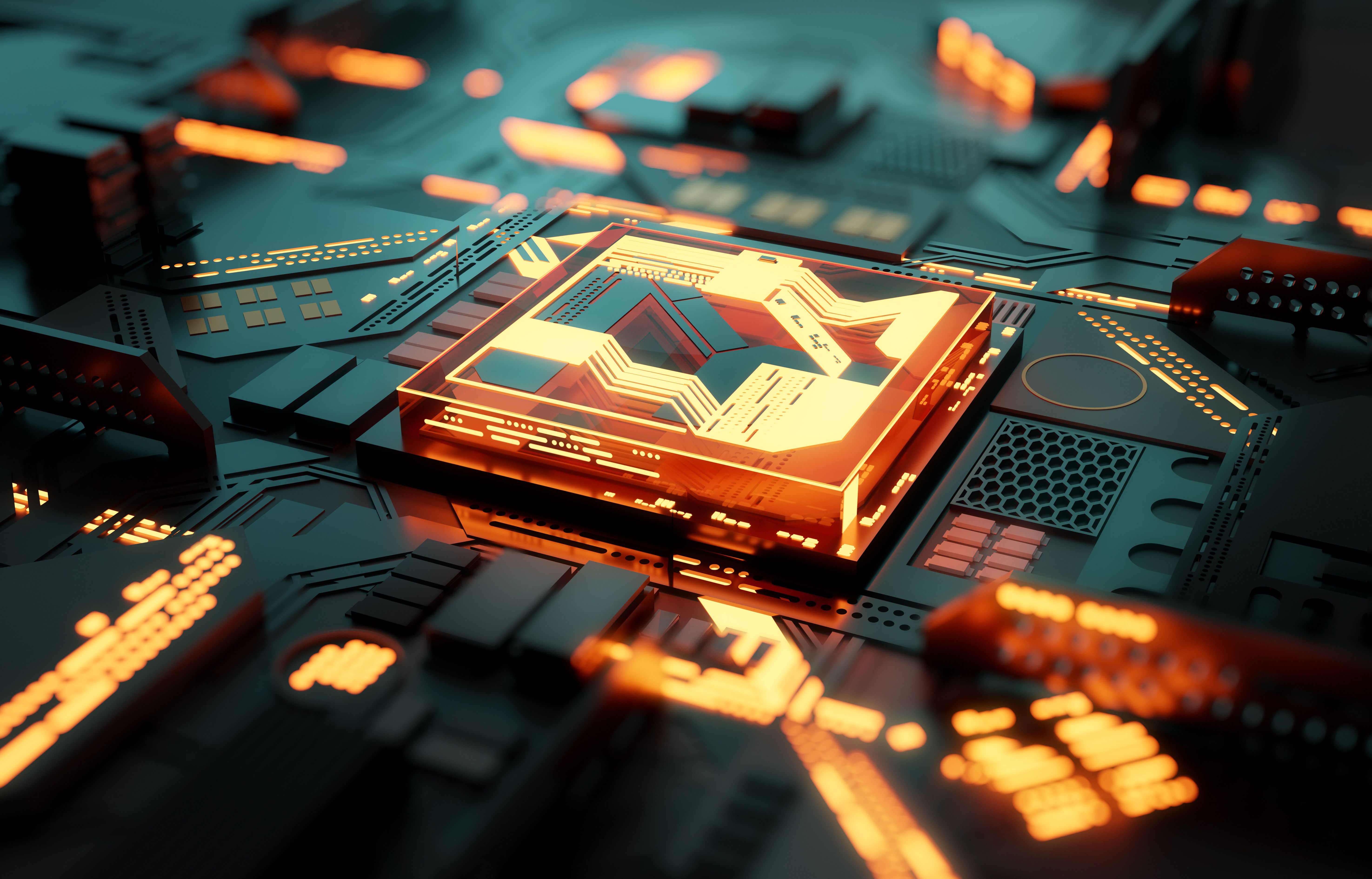Raman and AI for Pathological Classification
Scientists from Biahang University and Capital Medical University in Beijing, China are using Raman spectroscopy and artificial intelligence (AI) technology to streamline the pathological classification process. Their findings were published in Analytical Chemistry (1).
Futuristic CPU processor and machine learning concept. 3D illustration | Image Credit: © James Thew - stock.adobe.com

The use of AI alongside analytical techniques has become a hot topic among scientists. Machine learning, for example, can self-iterate and optimize problem solving for modeling data in an automated way, using computational algorithms (2). These methods can be used in image and speech recognition, natural language processing, and predictive modeling, among other areas. Machine learning and chemometrics also use statistical and computational methods to analyze and interpret data. Though there is more work to be done around implementing these methods, AI technology can have a positive impact on furthering scientific advancements.
Raman spectroscopy is a non-destructive chemical analysis technique based on the interaction of light with the chemical bonds within a material. It is used to provide detailed information about chemical structure, phase and polymorphy, crystallinity, and molecular interactions (3). Raman spectroscopy is often used for label-free biomolecular analysis of cells and tissues for pathological diagnosis in vitro and in vivo. AI technology can facilitate disease diagnosis based on Raman spectroscopy, including machine learning (PCA and SVM), manifold learning (UMAP), and deep learning (ResNet and AlexNet). Choosing the optimal AI classification model for different types of Raman spectral data is still an unclear process.
To rectify this, the scientists used five representative Raman spectral data sets, including endometrial carcinoma, hepatoma extracellular vesicles, bacteria, melanoma cell, and diabetic skin. Raman and AI technology have been combined in different experiments; for example, an AI system was once designed to understand the chemical pathways and progression of disease. This research analyzed breast cancer tissue samples using Raman spectroscopy combined with principal component (PCA) and linear discriminate analysis (LDA) (4).
After the data sets were selected, different characteristics regarding sample size, spectral data size, Raman shift range, tissue sites, Kullback–Leibler (KL) divergence, and significant Raman shifts (i.e., wavenumbers with significant differences between groups) were considered to test the performances of different AI models.
When analyzing data sets of large spectral data sizes, ResNet perfomed better than principal component analysis–support vector machine (PCA–SVM) and uniform manifold approximation and projection (UMAP). By building a data characteristic-assisted AI classification model, the scientists optimized the network parameters (principal components, activation function, loss function) of AI models based on data size, among other factors. The accuracy improved from 85.1 to 94.6% for endometrial carcinoma grading, from 77.1 to 90.7% for hepatoma extracellular vesicles detection, from 89.3 to 99.7% for melanoma cell detection, from 88.1 to 97.9% for bacterial identification, from 53.7 to 85.5% for diabetic skin screening, and a mean time expense of 5 s.
References
(1) Chen, X.; Shen, J.; Liu, C.; Shi, X.; Feng, W.; et al. Applications of Data Characteristic AI-Assisted Raman Spectroscopy in Pathological Classification. Anal. Chem. 2024, 96 (16), 6158–6169. DOI: 10.1021/acs.analchem.3c04930
(2) Workman Jr., J.; Mark, H. Artificial Intelligence in Analytical Spectroscopy, Part I: Basic Concepts and Discussion. MJH Life Sciences 2024. https://www.spectroscopyonline.com/view/artificial-intelligence-in-analytical-spectroscopy-part-i-basic-concepts-and-discussion (accessed 2024-4-23)
(3) What is Raman Spectroscopy? Horiba Scientific 2024. https://www.horiba.com/int/scientific/technologies/raman-imaging-and-spectroscopy/raman-spectroscopy/ (accessed 2024-4-23)
(4) Workman Jr., J.; Mark, H. Artificial Intelligence in Analytical Spectroscopy, Part II: Examples in Spectroscopy. https://www.spectroscopyonline.com/view/artificial-intelligence-in-analytical-spectroscopy-part-ii-examples-in-spectroscopy (accessed 2024-4-24)
AI-Powered SERS Spectroscopy Breakthrough Boosts Safety of Medicinal Food Products
April 16th 2025A new deep learning-enhanced spectroscopic platform—SERSome—developed by researchers in China and Finland, identifies medicinal and edible homologs (MEHs) with 98% accuracy. This innovation could revolutionize safety and quality control in the growing MEH market.
New Raman Spectroscopy Method Enhances Real-Time Monitoring Across Fermentation Processes
April 15th 2025Researchers at Delft University of Technology have developed a novel method using single compound spectra to enhance the transferability and accuracy of Raman spectroscopy models for real-time fermentation monitoring.
Nanometer-Scale Studies Using Tip Enhanced Raman Spectroscopy
February 8th 2013Volker Deckert, the winner of the 2013 Charles Mann Award, is advancing the use of tip enhanced Raman spectroscopy (TERS) to push the lateral resolution of vibrational spectroscopy well below the Abbe limit, to achieve single-molecule sensitivity. Because the tip can be moved with sub-nanometer precision, structural information with unmatched spatial resolution can be achieved without the need of specific labels.